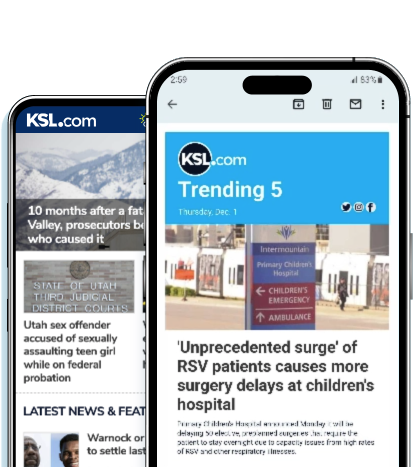Estimated read time: 2-3 minutes
This archived news story is available only for your personal, non-commercial use. Information in the story may be outdated or superseded by additional information. Reading or replaying the story in its archived form does not constitute a republication of the story.
LOGAN — Researchers at Utah State University said they’ve figured out how to forecast droughts one to three years in advance.
They can’t predict specific storms, but they can, with some degree of accuracy, say how much precipitation an area might get in the coming year.
“These predictions can provide a more long-term perspective,” said Yoshi Chikamoto, assistant professor at USU. “So if we know we have a water shortage prediction, we need to work with policymakers on allocating those water resources.”
Researchers believe it can become a major tool for agriculture, and maybe even wildfire management.
It starts with analyzing up to 100 terabytes of data, all of which is crunched through a supercomputer.
“One year is pretty high scale. Second-year is getting lower and lower after year by year,” Chikamoto said.
Chikamoto said predictions a year out can be done fairly well, but when it’s two to three years out, they tend to lose some accuracy.
He said a major indicator is the oceans and how they react to world climate patterns.
“We prove a model can predict water supply, so if we apply the system to the operational forecast, we can provide every year forecast and how it looks like in the future,” Chikamoto said.
That information can be crucial for agriculture, an industry that is otherwise unpredictable in many ways.
“If we can predict in advance when droughts will happen — one year, even two years, maybe in some cases three — that would just have huge positive impacts on the industry,” said agriculture specialist Matt Yost.
Yost said farmers could then prepare for fewer rainy days.
The model USU is using also looks at predicting water flows for the Colorado River, which is a major resource for many farmers and communities.
“We’re kind of on the cusp here. It’s a proof of concept that we can do it, but it takes a lot of effort and resources to make those predictions,” Yost said.
That’s where these researchers are going to need help, making sure that concept is turned into a reality — looking into the years ahead.
They said the biggest challenge is crunching all of the data it takes to make these predictions costs a lot of money.
That team of researchers will now look to government agencies who might be willing to support them in making it happen.









